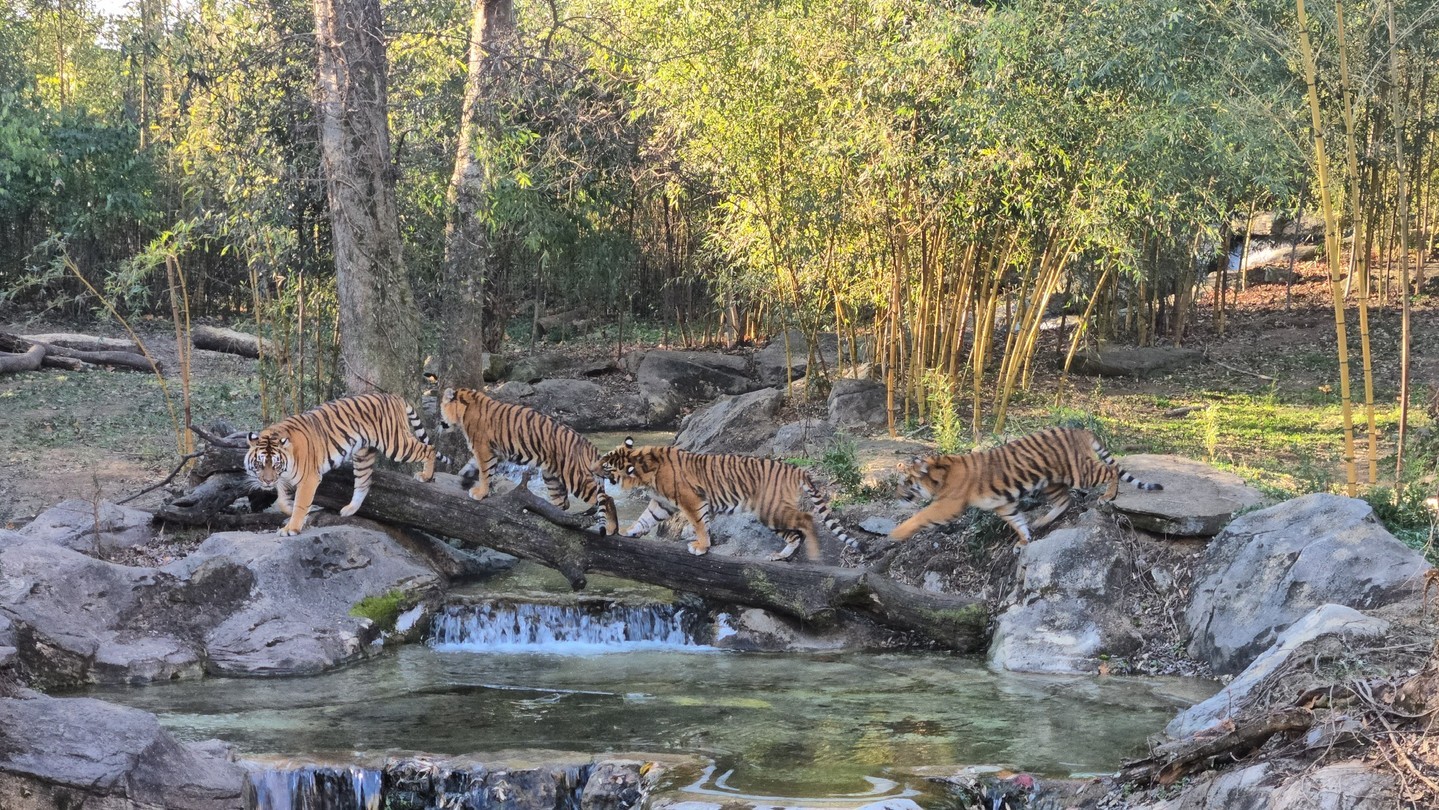- The importance of a cohesive family unit in tiger conservation efforts and the role of zoos in nurturing such bonds.
- The challenges and responsibilities of a zoo keeper, specifically focusing on the role of Keeper Stephanie in supporting Anne and the cubs.
- The behavioral traits and developmental stages of tiger cubs observed in a controlled zoo environment.
- The significance of wildlife photography in raising awareness about conservation and the role it plays in enhancing public engagement.
- Conservation strategies implemented by zoos to protect endangered species such as tigers, and their impact on global wildlife preservation.
Tiger conservation is a pressing issue in wildlife preservation and maintaining cohesive family units is crucial. In the world of tigers, family bonds are essential for the cubs’ survival and social development. Zoos play an instrumental role in preserving these relationships by providing a safe environment for family members to interact and grow. Anne, a magnificent tigress, and her cubs are prime examples of this.
In zoos, tigers receive care and protection, allowing their interactions to be carefully monitored and supported. This secure environment ensures that the maternal instincts of tigresses like Anne are nurtured, allowing them to rear their offspring successfully. By observing such dynamics, zoos contribute invaluable insights into the complexities of tiger behavior which are often hindered by natural factors like poaching and habitat loss in the wild. Through carefully structured programs, zoos provide essential support that fosters these family units, ultimately aiding in broader conservation efforts.
Stephanie, one of the committed zoo keepers, plays a vital role in ensuring Anne and her cubs thrive. Her responsibilities extend beyond basic care. She develops strong bonds with the animals, allowing her to understand their needs and behaviors deeply. Keeper Stephanie oversees the dietary requirements for Anne and her cubs, ensuring they receive a balanced diet necessary for their growth and health. She also creates enrichment activities that simulate the cubs’ natural environment to stimulate physical and mental development.
Her work also involves meticulous record-keeping, ensuring that every health check and behavioral observation is logged to aid in long-term research and understanding of captive tiger populations. Stephanie’s commitment exemplifies the immense dedication required from zoo professionals to nurture endangered species in captivity successfully.
Tiger cubs, like Anne’s, undergo stages of development that are fascinating to observe. From birth, they are born blind and fully dependent on their mother. As they grow, critical behavioral traits begin to emerge. During the initial months, cubs rely on their mother for food and learning survival skills. It’s during this period that they learn essential skills such as hunting and social interaction. They engage in playful activities that develop their motor skills and establish social hierarchies, even within the secure enclosures of a zoo. Understanding these stages and facilitating a nurturing environment for growth are essential tasks for zoo personnel to ensure these endangered beings reach maturity with the necessary skill set.
The role of wildlife photography is incredibly significant in raising awareness and fostering a connection between the public and wildlife conservation efforts. The photograph of Anne and her cubs, captured skillfully by Keeper Stephanie, serves as more than just a portrait of tiger family life. It is a powerful tool for advocacy. Such imagery has the ability to captivate audiences, igniting interest and empathy for endangered species. Public engagement tends to increase when people can visually connect with the subjects intended for conservation.
Photography in zoos allows the public a glimpse into the lives of animals they may never encounter in the wild. Through up-close observations, visitors can witness the grace and beauty of these majestic creatures, further supporting the argument for more robust conservation initiatives. Stephanie’s photo of Anne and her cubs is a reminder of what is at stake if conservation efforts do not thrive.
Zoos have gradually evolved over the decades from places of mere exhibition to centers of conservation and education. They implement comprehensive strategies to protect endangered species like tigers, focusing on breeding programs, habitat simulations, and global collaborations. These strategies have yielded significant outcomes in preserving the genetic diversity of tiger populations, which is under constant threat due to uncontrolled poaching and diminishing natural habitats.
By functioning as sanctuaries, zoos offer a controlled environment that supports research and education, raising awareness for conservation at all levels. They reinforce their pledge to save endangered species by participating in international breeding programs that prevent inbreeding and enhance genetic health. By fostering such collaborations, zoos reinforce their position as one of the last frontiers in combating species extinction.
The seamless blend of these components—family bonding, the dedicated role of keepers, observations of behavioral traits, impactful wildlife photography, and strategic conservation initiatives—illustrates the importance of zoos in tiger conservation. It is vital for society to acknowledge and support these endeavors as essential for the survival of endangered species in the world. Through continuous, informed efforts and shared commitment, the hope for successfully safeguarding the future of tigers like Anne and her cubs remains strong.
*****
Source Description
A purrfect family photo of Anne and the cubs! 🐯
📷 Keeper Stephanie


